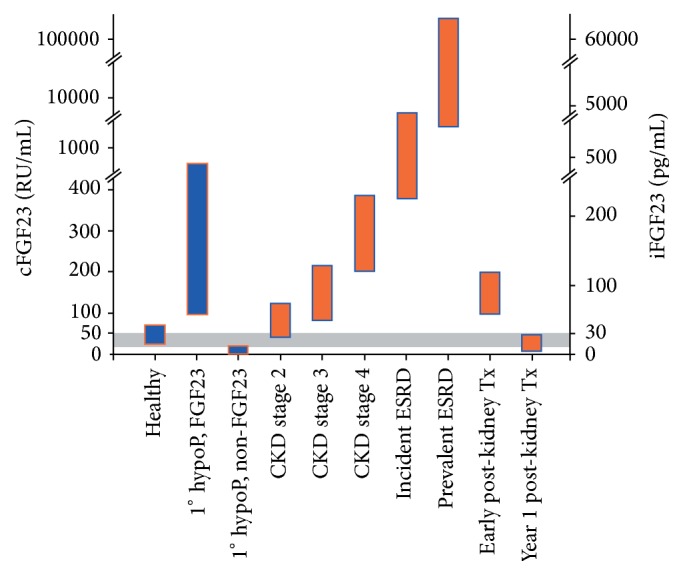Figure 1.

Representative levels of FGF23 in health, in various states of CKD (orange bars), and in primary hypophosphatemic disorders (blue bars). CKD, chronic kidney disease; ESRD, end-stage renal disease; Tx, transplantation. Reproduced with permission from Wolf [15]. The dual y-axis presents FGF23 levels on the scales of the two commercially available assay platforms. The intact assay detects biologically intact FGF23 exclusively (iFGF23), whereas the C-terminus (cFGF23) assay is capable of detecting both the intact molecule and its C-terminal fragments. The grey area represents the presumed but incompletely defined normal ranges. “1° hypoP, FGF23” refers to hypophosphatemic disorders caused by primary FGF23 excess, for example, X-linked hypophosphatemia. “1° hypoP, non-FGF23” refers to hypophosphatemic disorders caused by mechanisms other than FGF23 excess, for example, hereditary hypophosphatemic rickets with hypercalciuria, in which FGF23 levels are secondarily suppressed. CKD, chronic kidney disease; ESRD, end-stage renal disease; Tx, transplantation.
